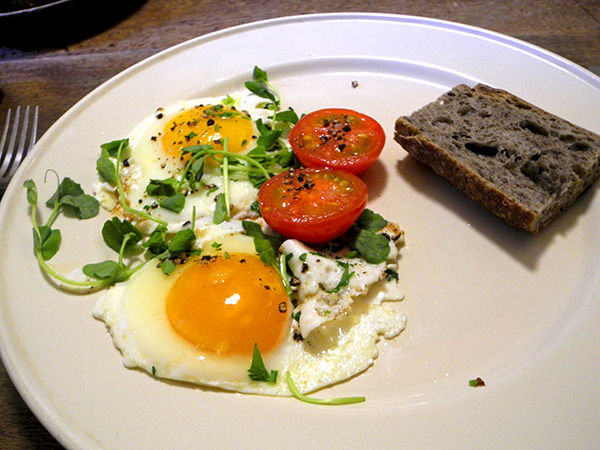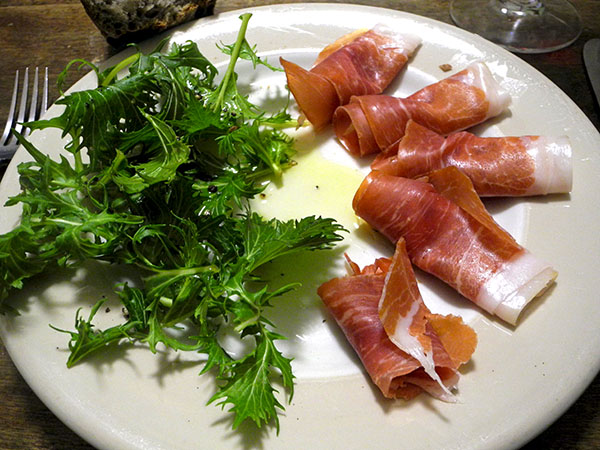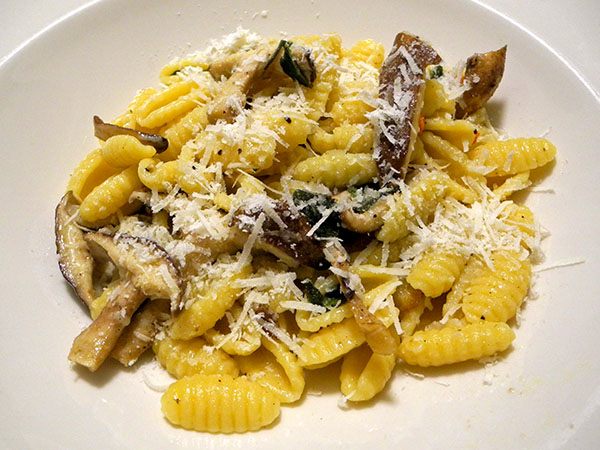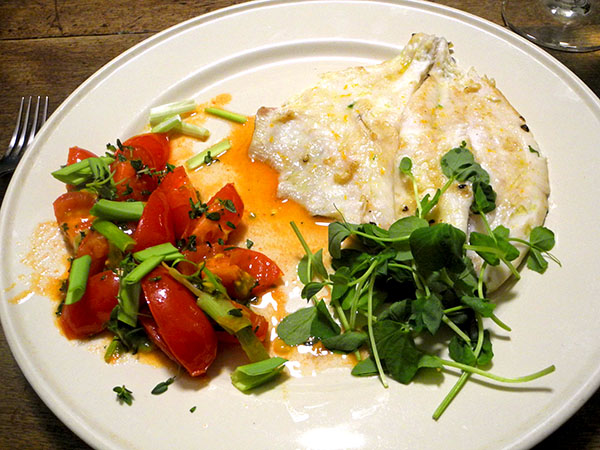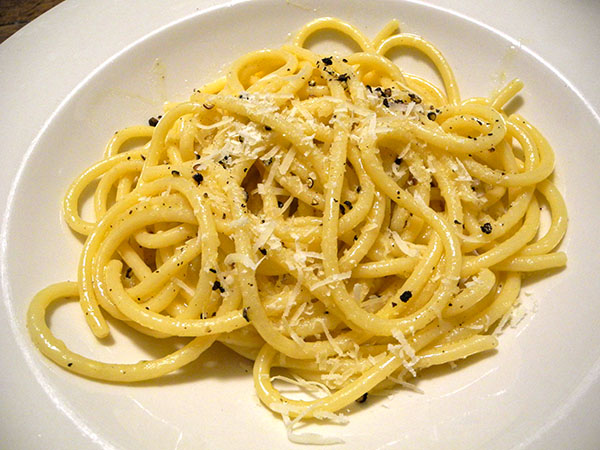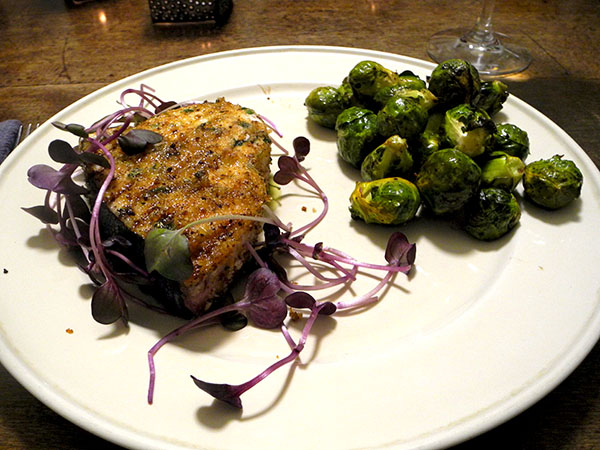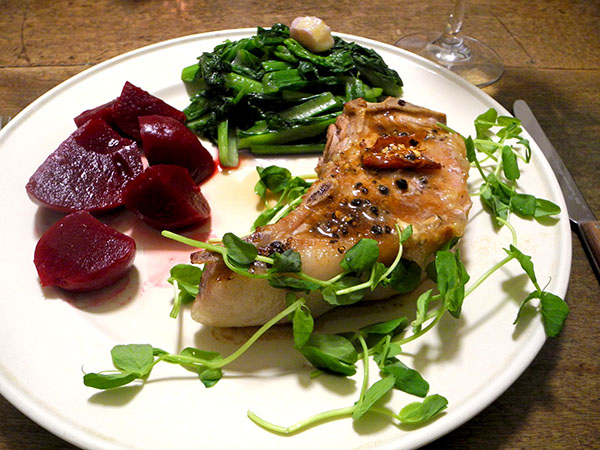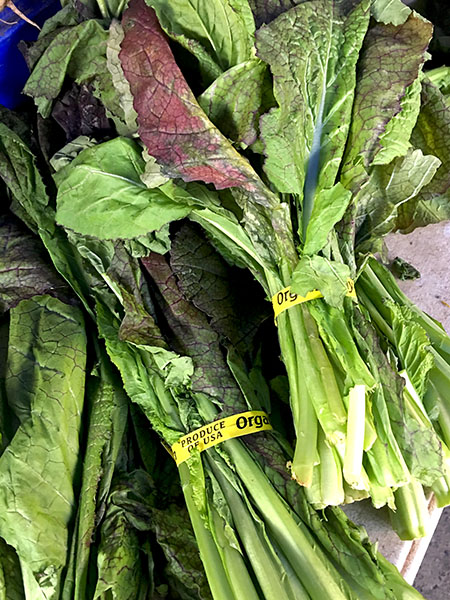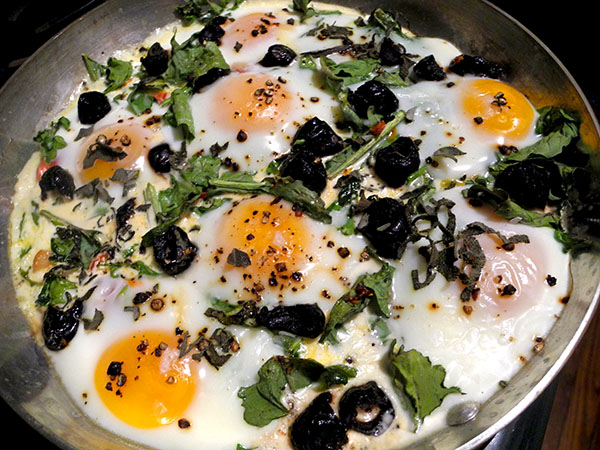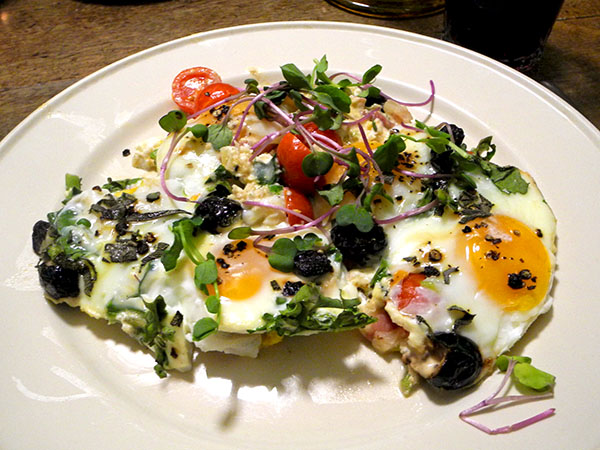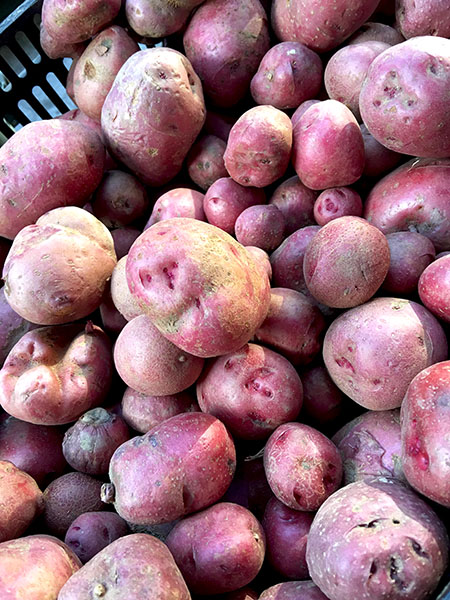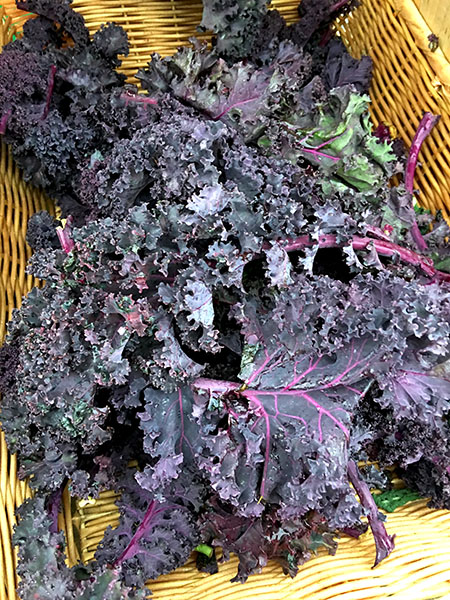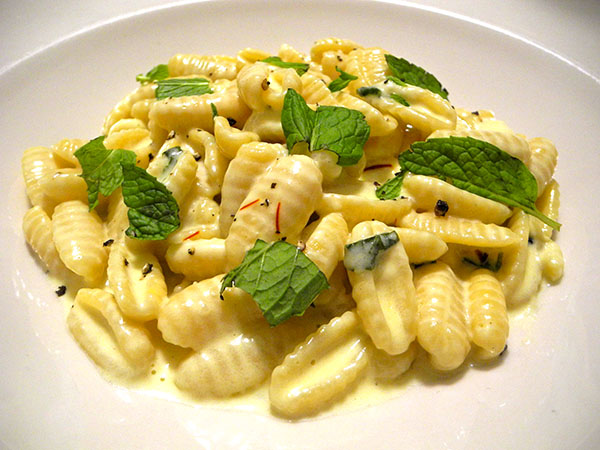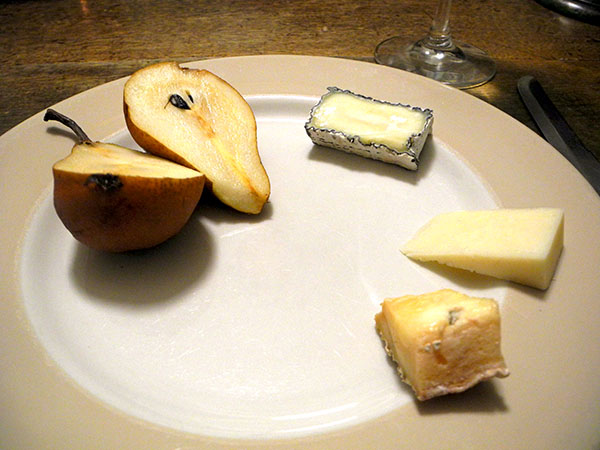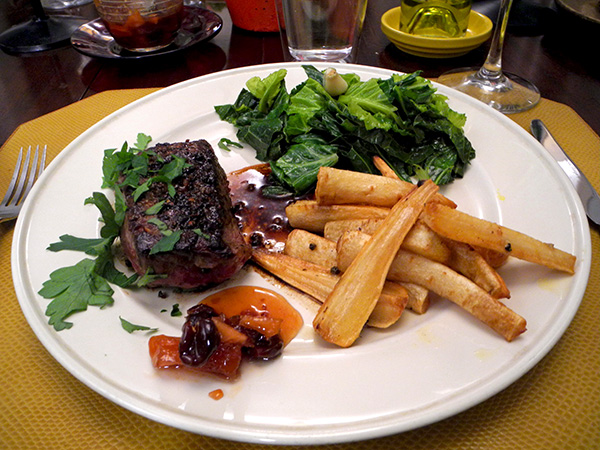
I could easily get used to this.
Venison has always been one of my favorite entrées, but I’m becoming more and more comfortable with preparing it at home, and I’m really enjoying the process of selecting it from some of my favorite butchers.
This time I picked a fresh venison ‘shortloin’ from Frank (the game specialist brother) at Ottomanelli’s in the West Village.
We had expected to have guests, although we hadn’t starting asking friends until after they had already made commitments, as it turned out. We had both been under the weather for weeks, and arranging a dinner party didn’t get on the to-do list until later.
The piece, the very tenderest loin cut of red deer (cervus elaphus), that I had brought home was larger than we wanted for just ourselves (it’s a very rich meat), so I cut one section away after I had unwrapped the package and carefully stowed it in the freezer for another day.
The recipe I used is for the venison is by Brendan Walsh; it’s one from an article I had cut from the Daily News 30 years ago, and I still have the yellowing newsprint in my ‘game’ file. Walsh was the young chef at Arizona 206 at the time.
The venison was the only major part of this meal not sourced locally (American game is not allowed to be sold anywhere in the country), and many of the ‘minor’ elements – including the fantastic lemon[!] – were also from the New York City area.
I included some of the compote or chutney I had prepared for our Thanksgiving dinner, and which we have enjoyed again since; it was as luscious as ever.
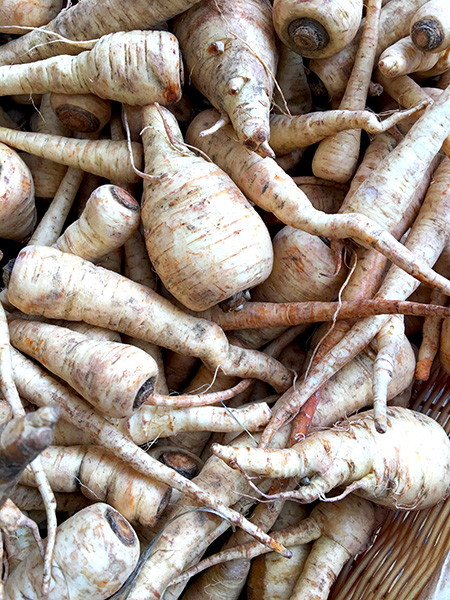
The tender parsnips were cooked mostly along the lines of a recipe, new to me, which I found on this site.
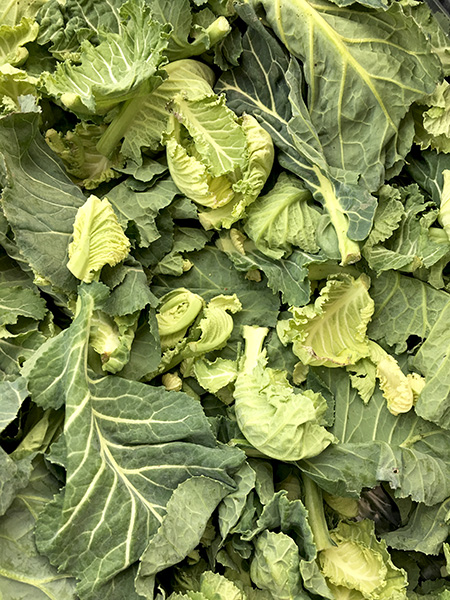
The sweet collards are old friends of ours.
- two 7-ounce, one-inch thick medallions cut from a fresh, vacuum-packaged 22-ounce New Zealand venison ‘shortloin’ from D’artagnan, via Ottomanelli’s, dried rubbed with olive oil and a very generous coasting of freshly-cracked black peppercorns, set aside for more than an hour, after which it was placed over moderately high heat in 1-2 tablespoons of a combination of butter and olive oil inside an oval 11-inch enameled cast iron pan, cooked barely medium rare, which meant about 2 minutes on one side, or until juices had begun accumulating on the top, turned and cooked for another 2 minutes, transferred to warm plates, the bottom of the pan scraped with a wooden spatula to collect the juices, a quarter cup of brandy (Courvoisier V.O. this time) added to the pan and cooked over high heat until reduced to about 2 tablespoons before the sauce was poured over the meat, which was then garnished with chopped parsley from Alex’s Tomato Farm at Chelsea’s Down to Earth Farmers Market (it was almost certainly the last of this sweet herb I will see from local farmers)
- quince chutney, made following this theKitchn.com recipe, using a shallot from Keith’s Farm, a garlic clove from Stokes Farm, quince from Red Jacket Orchards, dried sweet cherries (don’t know whether they were local) from Whole Foods, fresh ginger from Lani’s Farm, apple cider from Locust Grove Fruit Farm (the recipe asked for apple cider vinegar, and I do have a bottle of the local stuff, from Race Farm, but I misread the instruction and the dish still turned out more than fine)
- half to 3 quarters of a pound of young parsnips from Tamarack Hollow Farm, scrubbed, peeled, cut, roughly into 3 to 4 inch lengths and half inch widths, tossed and stirred inside a medium copper pot in which 4 tablespoons of butter had been melted, the roots sprinkled with salt and pepper, removed with a slotted wooden spoon and the pot put aside on the stove, arranged on a large, well-seasoned Pampered Chef unglazed ceramic pan and roasted in a 375º oven for about 45 minutes, after which half a tablespoon of juice and a teaspoon of zest from a sweet local lemon, from Fantastic Gardens of Long Island, and a few pinches of freshly-grated nutmeg were added to the pot of melted butter reserved earlier, the parsnips added and tossed with the butter over medium heat for a minute or two, and the seasoning corrected, if necessary
- some sweet late-season loose collard greens from Lucky Dog Organic Farm, cut as a very rough chiffonade, braised in a heavy pot in which one large clove of quartered garlic from Stokes Farm had been allowed to sweat with some olive oil, the dish finished with salt, pepper, and a drizzle of olive oil
- the wine was a California (Napa) red, Ken Deis Cabernet Sauvignon Napa Valley Reserve 2014, from Naked Wines
We had begun the meal with sips of champagne in the parlor, 2 steps below the dining gallery (it sounds fancy, especially since there were only the two of us, but it’s actually something we rarely indulge ourselves with).
- breadsticks, Mario Fongo ‘Il Panate’, Grissini con farina di riso nero ‘Artemide’, from Eataly
- the wine was a split of Veuve Clicquot Champagne Brut Rosé
The first course was one of my favorites, for its pleasures and for its ease of preparation. Although this time I had completely forgotten to include the little bit of of balsamic vinegar I had even set out beforehand, it was still delicious.

- inside a large enameled cast iron pot, one chopped garlic clove from Stokes Farm, sautéed in a tablespoon of olive oil only until golden, followed by less than 2 teaspoons of balsamic vinegar, 6 crushed juniper berries, and roughly half of a pound of a ‘conehead’ cabbage (also known as ‘caraflex’ or ‘arrowhead’ cabbage) from Norwich Meadows Farm, very finely sliced after the triangular core had been removed and set aside, the cabbage seasoned with salt and pepper, the heat raised, the mix fried for about one minute, stirring, then arranged in 2 shallow bowls (I’ve used the basic recipe a number of times as an appetizer when we have guests; it’s from ‘Healthy Italian Cooking‘, by Emanuella Stucchi, a slim ‘stealth vegetarian’ volume I had been using for years before I realized there was absolutely no meat or fish in any of the recipes it described
- slices from a loaf of Eric Kayser’s ‘Pain aux Céréales’
- the wine was a German (Mosel) white, Selbach Incline Dry Riesling Mosel 2015, from Chelsea Wine Vault
We didn’t make it to a cheese course.
- the music throughout the meal was WKCR streaming, its 9-day ‘Bach Festival 2016, specifically the cello suites, with various performers, in a program hosted by the cellist Louise Dubin
